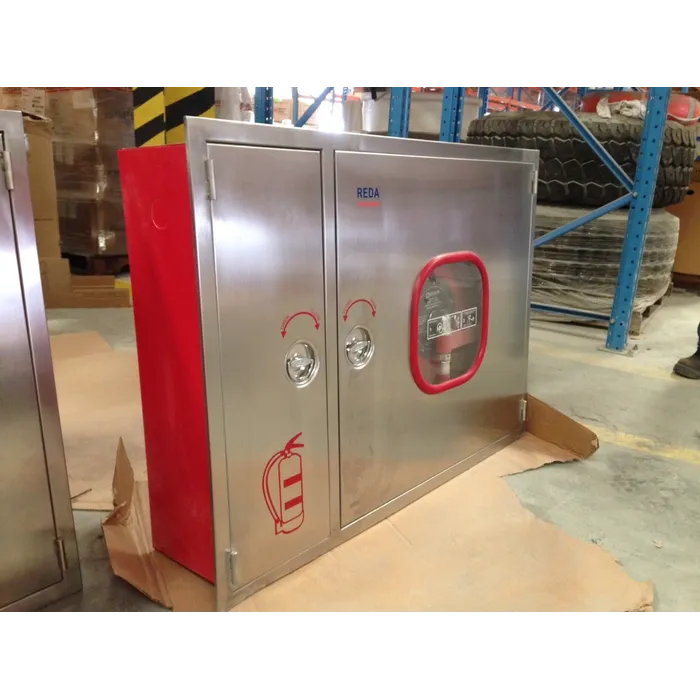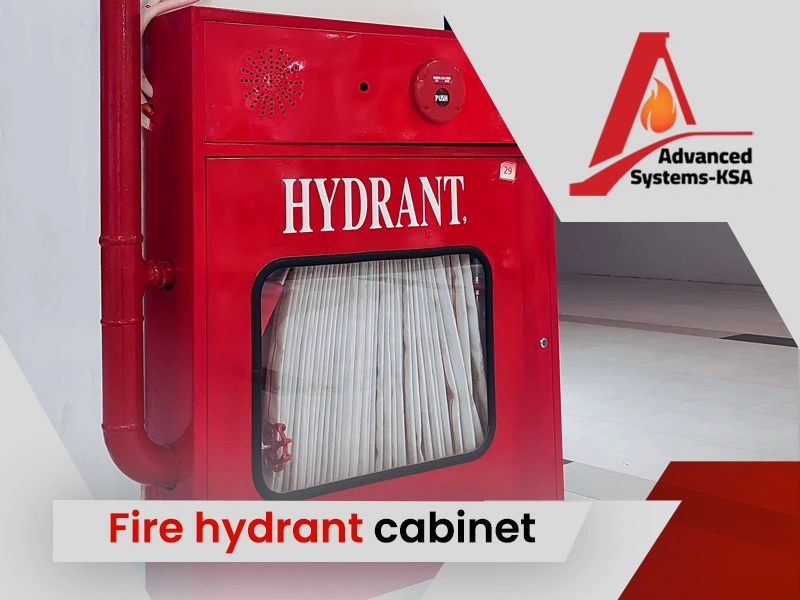Proper fire hose cabinet installation is crucial for safety. In Saudi Arabia, regulations ensure accessibility and efficiency.
Understanding the correct installation height is vital for compliance and effectiveness. Fire safety standards vary worldwide, but Saudi Arabia has specific guidelines to ensure optimal safety. This blog explores the ideal installation height for fire hose cabinets in this region, ensuring they are both practical and compliant.
Knowing the correct height prevents delays during emergencies and ensures easy access. This is crucial for safety and compliance with local regulations. Whether in public buildings or private structures, correct installation height is necessary for effective fire response. This guide will help you understand the standards and importance of proper fire hose cabinet placement in Saudi Arabia. Stay tuned to learn more about these essential safety measures.
Fire Hose Cabinet Standards
Fire hose cabinets are crucial for safety in buildings. Standards dictate their installation height. These guidelines ensure accessibility during emergencies. Different regions have specific standards. Let’s explore Saudi Arabian and International standards.
Saudi Arabian Standards
Saudi Arabia follows strict fire safety standards. The Saudi Building Code specifies cabinet height. This ensures easy access for users in emergencies. The standards prioritize accessibility for all individuals. Compliance is mandatory for building safety certification.
International Standards
International standards vary by region. Organizations like NFPA guide installation heights. Their guidelines ensure cabinets are accessible and functional. These standards promote global safety in fire emergencies. It’s important to align local standards with these international guidelines.

Credit: redasafe.com
Recommended Installation Height
When you’re thinking about safety in buildings, fire hose cabinets play a crucial role. Their installation height is not just a matter of compliance but also a vital factor in ensuring quick access during emergencies. In Saudi Arabia, specific guidelines exist to help you get this just right. Let’s delve into the recommended installation height to ensure you’re on the right track.
General Guidelines
In Saudi Arabia, the installation height for fire hose cabinets is carefully outlined. The goal is to make them easily accessible to everyone, including those who might be in a hurry or panicked during a fire emergency.
It’s essential to adhere to these guidelines to avoid penalties and ensure safety. Consider the height that would be comfortable for most people to reach without stretching or bending excessively.
Your building’s design may also influence where and how high the cabinets should be placed. Are you considering this in your planning?
Specific Measurements
The standard recommended height for installing fire hose cabinets in Saudi Arabia is typically between 1.2 meters and 1.5 meters from the floor to the center of the cabinet handle.
This range ensures that even someone who is shorter or a child can access the equipment if necessary. It also accounts for the average reach of an adult, making it a practical choice for most users.
Imagine you’re in a smoky corridor—would you want to struggle to reach a hose? This measurement is designed to prevent that scenario.
In my experience, following these specific measurements not only keeps you compliant but also instills confidence in the safety measures of your building. Have you checked if your installations meet these standards?
Adhering to these measurements not only aligns with Saudi regulations but also serves as a testament to your commitment to safety. Are you ready to make your building safer?
Factors Influencing Installation Height
Fire hose cabinet installation height in Saudi Arabia depends on safety regulations, building design, and accessibility. Ensuring proper height allows quick access during emergencies. Compliance with local fire codes is essential for optimal placement.
When installing fire hose cabinets in Saudi Arabia, the height at which they are installed is crucial. Several factors influence the optimal installation height to ensure safety, accessibility, and compliance with local regulations. Let’s dive into the key factors you need to consider. ###Building Type
The type of building plays a significant role in determining the installation height of fire hose cabinets. In residential buildings, cabinets need to be accessible to the general population, including children and the elderly. In contrast, in commercial or industrial buildings, the installation height may vary to accommodate the working environment. For example, in a factory setting, the cabinets might be installed higher to avoid obstruction by machinery. ###Occupancy Load
Occupancy load refers to the number of people in a building at any given time. Higher occupancy loads typically require more stringent safety measures. If your building has a high occupancy load, the fire hose cabinets should be installed at a height that is quickly and easily accessible to everyone. This ensures that in the event of an emergency, people can swiftly locate and use the fire hose without difficulty. In buildings with lower occupancy, the installation height might be adjusted slightly, but still within reach for effective use. By considering these factors, you can ensure that your fire hose cabinets are installed at a height that maximizes safety and compliance. Have you ever thought about the specific needs of your building’s occupants when planning safety measures?
Credit: www.facebook.com
Installation Process
Fire hose cabinet installation height in Saudi Arabia must follow specific safety standards. Cabinets are typically mounted between 1. 5 to 1. 8 meters from the floor, ensuring accessibility in emergencies. Proper placement guarantees efficient operation and compliance with local regulations.
When installing a fire hose cabinet in Saudi Arabia, adhering to the correct installation process is crucial for safety and compliance. The process ensures the cabinet is easily accessible during emergencies, and it meets all regulatory standards. Let’s delve into the essential steps of preparing and mounting a fire hose cabinet effectively.Preparation Steps
Before you start, gather all necessary tools and equipment. This includes a measuring tape, level, drill, anchors, and screws. Check the local regulations to ensure you comply with Saudi Arabian safety standards. Next, select a location that is easily accessible and visible. The cabinet should be installed at a height that allows quick access during emergencies. Typically, a height of 1.5 meters from the floor to the center of the cabinet is recommended. Lastly, ensure the wall surface is suitable for mounting. It should be sturdy enough to support the weight of the cabinet and hose. If you’re working with a fragile wall, consider reinforcing it first.Mounting Instructions
Begin by marking the exact spot where the cabinet will be installed. Use a level to ensure your markings are straight and aligned. Precision here can save you from future hassle. Drill holes at the marked points. Use appropriate anchors and screws to secure the cabinet. If you’ve ever hung a heavy picture frame, you know the importance of using the right anchors to prevent it from falling. Once the cabinet is mounted, check its stability. It should not wobble or shift when touched. Imagine the urgency during an emergency; you wouldn’t want to struggle with an unstable cabinet. Finally, place the fire hose inside the cabinet and secure the door. Ensure the hose is easily accessible and not tangled. What if someone else needs to use it in a hurry? Clear instructions and visible access can make all the difference in a critical moment. By following these steps, you can ensure the fire hose cabinet is installed efficiently and effectively, ready for any emergency.Common Mistakes To Avoid
Installing fire hose cabinets at incorrect heights can lead to accessibility issues. Ensure they are placed between 1. 2 and 1. 5 meters above the floor. This guarantees easy reach in emergencies. Avoiding these common mistakes enhances safety and compliance in Saudi Arabia.
Installing a fire hose cabinet might seem straightforward, but it’s easy to make mistakes that could affect safety and functionality. Common Mistakes to Avoid can save you time and ensure compliance with Saudi Arabian standards. Let’s dive into the critical missteps you should watch out for during installation.Incorrect Height
One of the most frequent errors is setting the cabinet at the wrong height. You might think mounting it higher keeps it out of the way, but this can make it hard to access in emergencies. Saudi regulations often require specific mounting heights for ease of access. Check the local fire safety codes before you start drilling. Have you ever tried reaching for something in a hurry, only to find it just out of reach? That’s exactly what you want to avoid here.Inadequate Access
Another common mistake is not considering the surroundings of the cabinet. You might have a perfectly mounted cabinet, but if it’s blocked by furniture or other obstacles, it’s practically useless. Ensure there’s a clear path to the cabinet, free of obstructions. Think of it like ensuring your car isn’t boxed in when you need to leave quickly. Ask yourself: If a fire broke out, would you be able to reach the hose without tripping over something? Consider these points seriously; safety isn’t just about having the right equipment—it’s about making sure that equipment is usable when it counts.
Credit: www.youmats.com
Maintenance And Inspection
Maintenance and inspection of fire hose cabinets are crucial in Saudi Arabia. Proper upkeep ensures safety and functionality. Regular checks and compliance with safety standards are essential. They guarantee the readiness of fire safety equipment. This section explores the importance of these aspects.
Regular Checks
Regular checks of fire hose cabinets prevent potential malfunctions. Inspectors should verify that the cabinet doors open easily. Ensure hoses are undamaged and connectors are secure. Look for any signs of corrosion or wear. Regular checks help identify issues early. This prevents costly repairs later.
Compliance With Safety Standards
Ensuring compliance with safety standards is vital. Saudi Arabia follows strict safety regulations. Fire hose cabinets must meet these standards. Proper installation height is part of these regulations. It ensures accessibility in emergencies. Frequent inspections ensure ongoing compliance. This protects both property and lives.
Frequently Asked Questions
What Is The Standard Height For A Fire Hose Cabinet?
The standard height for a fire hose cabinet is between 3. 5 to 5 feet above the floor. This ensures easy access during emergencies.
At What Height Should A Fire Hose Reel Be Installed?
Fire hose reels should be installed at a height of 1. 5 meters from the floor. This ensures easy accessibility during emergencies. Always follow local safety regulations for precise measurements. Proper installation height enhances safety and effectiveness.
Where Should Fire Hose Cabinets Be Placed?
Fire hose cabinets should be placed near exits and high-risk areas for easy accessibility during emergencies. Ensure they are visible and unobstructed. Position them at standard heights for quick access. Regular maintenance and checks are essential to ensure functionality and compliance with safety regulations.
What Is The Nfpa Code For Fire Hose Cabinets?
The NFPA code for fire hose cabinets is NFPA 14. This standard covers the installation of standpipe and hose systems.
Conclusion
Proper fire hose cabinet installation ensures safety in Saudi Arabia. Following local regulations is crucial. Correct height placement makes access easy during emergencies. Always consult experts for accurate installation. Regular maintenance keeps the equipment ready for use. Fire safety isn’t just about rules; it’s about protecting lives.
Every detail matters, from installation to upkeep. Stay informed and prioritize safety standards. This helps in safeguarding people and property. Remember, safety planning is an ongoing process. Adjust as needed for the best outcomes. Stay safe and prepared.

